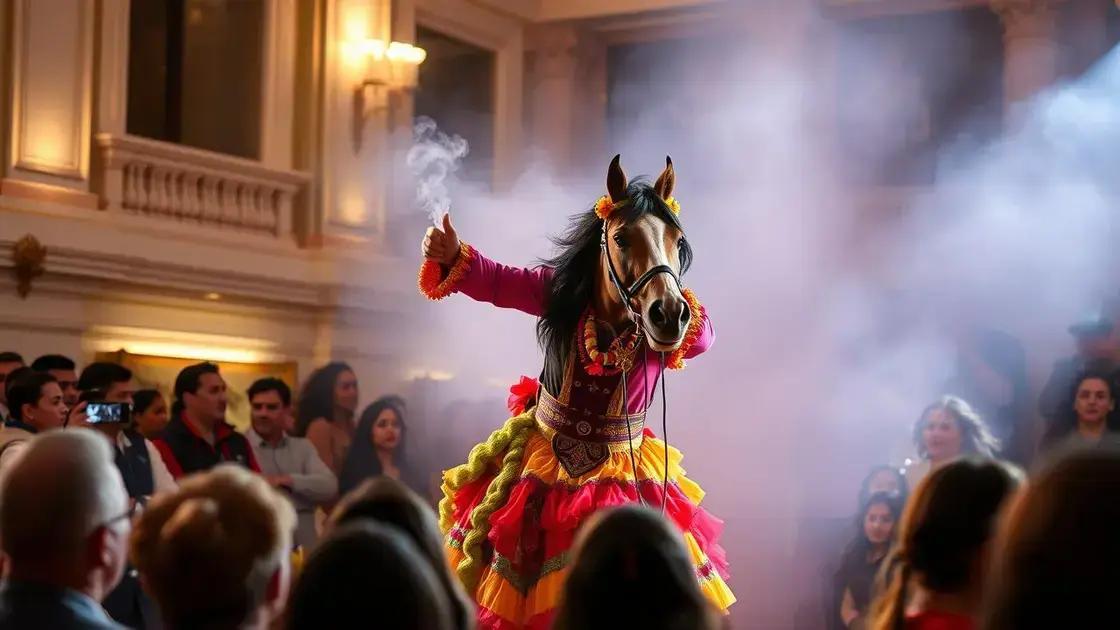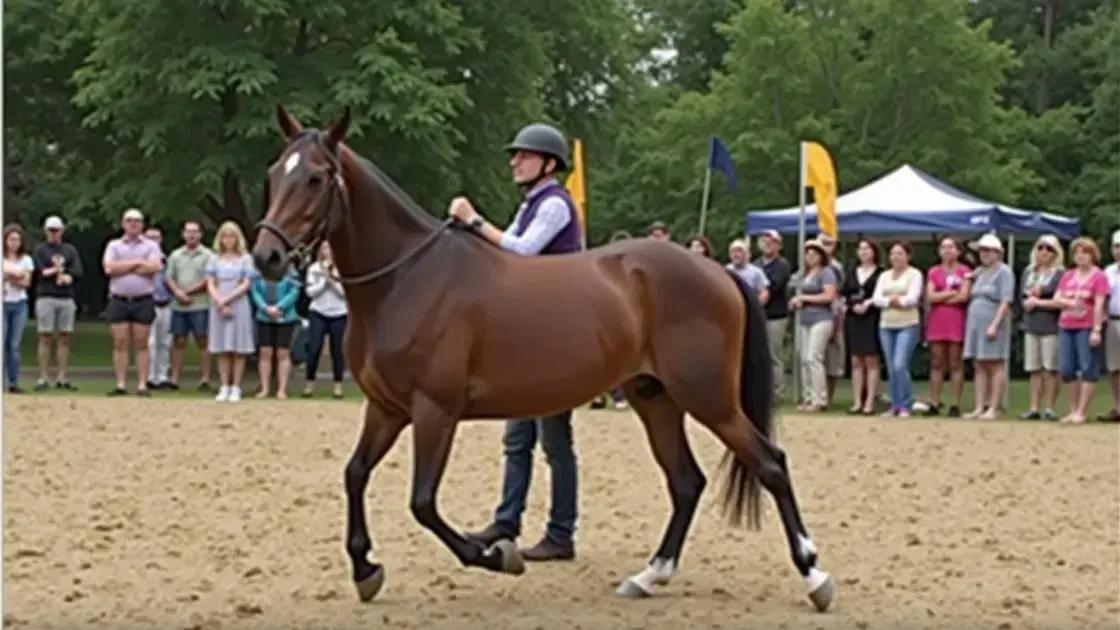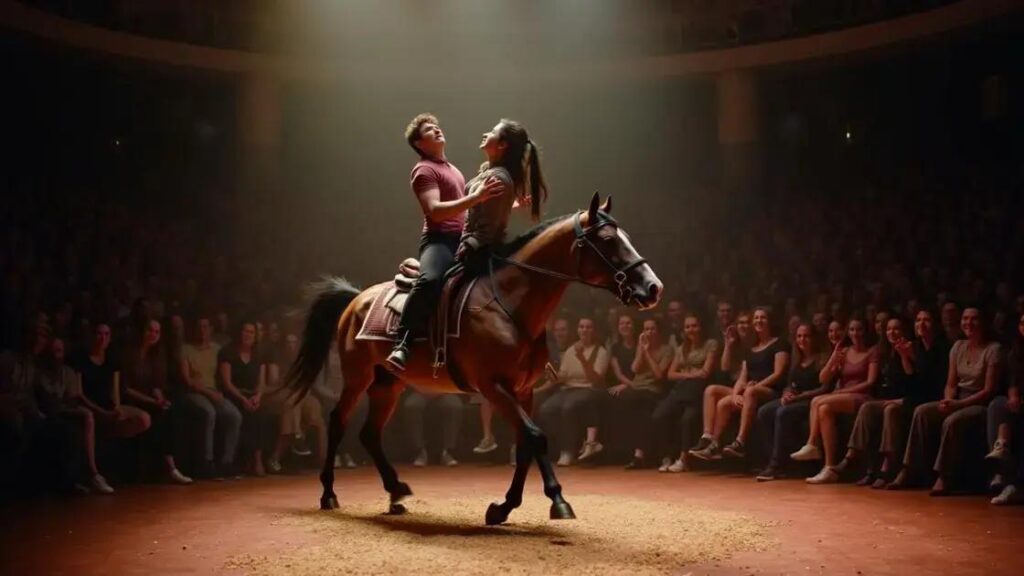The Horse Trick can be an exciting performance, but it may come with side effects such as physical strain, nausea, and emotional discomfort. To ensure safety, performers should take precautions, seek help if experiencing persistent pain or anxiety, and be aware of audience reactions. Proper preparation can enhance both performer and audience enjoyment.
The Horse Trick is a fascinating and popular performance art that captivates audiences around the world. However, like any other trick, it comes with its own set of side effects that performers and audiences should be aware of. In this article, we will dive into the main effects associated with the Horse Trick, necessary precautions, and the signs that indicate when professional assistance might be needed.
Understanding the Horse Trick

Understanding the Horse Trick involves recognizing its origins, execution, and effects. This trick has been performed for centuries, often featured in circus acts and street performances. It elicits awe and curiosity, drawing spectators in with its apparent simplicity and surprising outcome.
What is the Horse Trick?
The Horse Trick typically consists of a performer pretending to manipulate a horse with seemingly effortless skill. This form of entertainment showcases the performer’s talent in animals and illusion, captivating the audience’s imagination.
How is it performed?
Performers usually begin by establishing a connection with their audience. As they execute the trick, they may use visual cues, sound effects, or props to enhance the performance. The perceived relationship between the performer and the horse is what truly mesmerizes onlookers.
The Role of Audience Engagement
Engaging the audience is crucial in the Horse Trick. Maintaining eye contact and incorporating humor can elevate the performance. A well-executed trick keeps the audience on the edge of their seats, anxious to see what happens next.
Effects on the Performer
While the Horse Trick is entertaining, it can also have physical effects on the performer. Gripping the reins tightly and maintaining the right posture is essential. Over time, it can lead to strain or discomfort, making it important for performers to practice proper techniques.
Common Side Effects

The Horse Trick, while entertaining, can lead to various common side effects for both performers and audiences. Understanding these effects is crucial for ensuring safety and enjoyment.
Physical Strain
Performers may experience physical strain due to repeated movements and posture. This can include muscle soreness, joint pain, or fatigue after long performances. It is important for performers to warm up and stretch to prevent such issues.
Nausea or Dizziness
Some audience members may feel nausea or dizziness, especially if the trick involves quick movements or unexpected actions. Keeping a safe distance from the performance can help mitigate these feelings.
Over-excitement
While excitement is a normal reaction, over-excitement can lead to heightened stress levels. This might affect breathing and heart rate. Audiences should find ways to relax and fully enjoy the spectacle without overwhelming their senses.
Psychological Effects
Witnessing such tricks can also lead to psychological effects. Some may feel anxious or fearful, especially if they are not accustomed to such stunts. It is essential for performers to gauge their audience’s reactions and adjust the performance accordingly.
Precautions to Take

When performing the Horse Trick, there are important precautions to take to ensure the safety of both the performer and the audience. These measures help in minimizing risks and enhancing the overall experience.
Warm-Up and Stretch
Performers should always start with a warm-up routine. Stretching can reduce the risk of injuries related to muscle strains and joint pain. A few minutes of light exercise can help increase flexibility and prepare the body for action.
Check the Performance Area
Before beginning, it’s crucial to inspect the performance area. Ensure that there are no obstacles or hazards that could cause accidents. A clear, open space allows for safe movement and helps maintain audience safety.
Know Your Audience
Understanding the audience’s comfort level is vital. If the trick involves sudden movements or surprising elements, performers should gauge reactions and adjust accordingly. Being aware of the audience’s fears or concerns can help tailor the performance for maximum enjoyment.
Use Proper Equipment
Utilizing proper equipment is essential for safety. Ensure that any props used in the trick are secure and in good condition. This reduces the likelihood of equipment failure during the performance.
When to Seek Help

Knowing when to seek help is vital for anyone involved in performing the Horse Trick. Certain signs indicate that professional assistance or medical attention may be necessary.
Persistent Pain
If a performer experiences persistent pain after performing, it is a sign to seek medical advice. Ongoing discomfort could be a symptom of a more serious injury that requires attention.
Severe Reactions from Audience Members
Audience members exhibiting severe reactions, such as fainting, extreme anxiety, or panic during the trick, should receive immediate help. Performing magic should be enjoyable, and addressing any audience discomfort is essential.
Uncontrolled Anxiety
If a performer feels uncontrolled anxiety or fear before or during the trick, they may need support. Speaking with a coach or mental health professional can help manage these feelings.
Signs of Overworking
Performers who notice signs of overworking, such as exhaustion or lack of focus, should take a break and consult a professional. Recognizing these signs can prevent serious injuries and ensure long-term success in performing.
Understanding the Importance of Safety in the Horse Trick
The Horse Trick is an exciting performance that can captivate audiences when done safely. Understanding the potential side effects is crucial for both performers and spectators.
By being aware of common side effects, taking necessary precautions, and knowing when to seek help, everyone involved can enjoy a safe and entertaining experience. This ensures that the joy of performing and watching the Horse Trick can continue without unnecessary risks.
Ultimately, maintaining safety in this art form allows performers to showcase their skills while keeping their audience engaged and delighted.
FAQ – Frequently Asked Questions about the Horse Trick
What are the main side effects of the Horse Trick?
The main side effects can include physical strain, nausea, dizziness among audience members, and psychological discomfort for both performers and spectators.
What precautions should performers take before performing the Horse Trick?
Performers should warm up and stretch, check their performance area for hazards, understand their audience’s comfort levels, and use proper equipment.
When should performers seek help?
Performers should seek help if they experience persistent pain, if audience members show severe reactions, or if they feel uncontrolled anxiety during the performance.
How can audience members ensure their safety during the Horse Trick?
Audience members should maintain a safe distance from the performance area and communicate any feelings of discomfort to the staff.
What should I do if I feel dizzy or nauseous watching the Horse Trick?
If you feel dizzy or nauseous, it’s best to step outside for some fresh air and, if necessary, seek medical advice.
Can the Horse Trick be performed safely?
Yes, the Horse Trick can be performed safely by following precautions, being aware of side effects, and understanding when to seek help.












